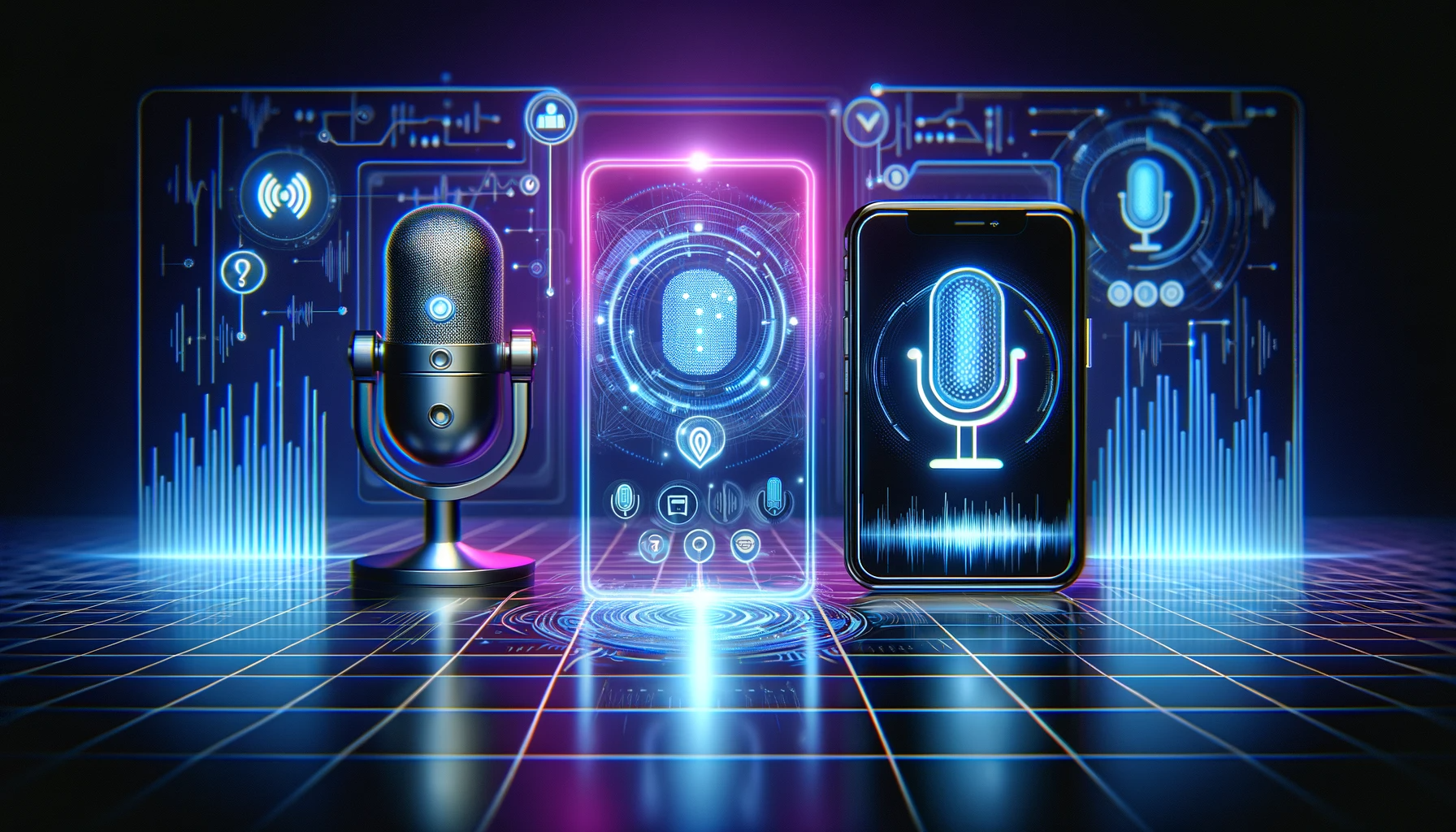Voice Recognition: Advancements in Biometric Authentication

Introduction
Everyone has a different voice. Each person’s voice includes a unique set of pitches, tones, frequencies, and other attributes. This is what makes it possible to recognize the voice of someone that you know.
Voice recognition is a form of biometric security that uses the distinct attributes of a person’s voice to uniquely identify them. Since every person’s voice has unique patterns, it offers the potential to securely verify users’ identities.
User authentication is currently a challenging problem in cybersecurity. Commonly used forms of authentication — such as passwords and SMS-based one-time passwords (OTPs) — are insecure, resulting in compromised user accounts. Voice recognition offers a secure, user-friendly method to verify users’ identities and provide them with access to their devices and online accounts.
This article explores how voice recognition works as a biometric factor. This discussion includes its working principles, recent advancements in the space, and some applications of voice recognition for user authentication in the real world.
How Does Voice Recognition Work?
Biometric authentication systems rely on the ability to measure and identify users based on some unique attribute. This could be fingerprints, facial features, or — in the case of voice recognition — the combination of pitch, tone, and speech patterns in someone’s speech.
During the account creation phase, a recognition system will record the users’ voice. This may include asking the user to say certain words or phrases to provide a more complete picture.
The voice recognition system will then analyze this voiceprint to extract unique features, such as the pitch and tone of their speech. This information provides a highly reliable method of recognizing the user’s voice and authenticating their identity.
When the user attempts to log into their account, they will be asked to speak again. This voice print is then compared to the data stored by the voice recognition system. If the voiceprints match, then the user will be granted access.
Voice recognition — like any biometric authentication system — matches voiceprints within a certain margin of error. This way, having a cold won’t prevent you from being able to access your account. However, this margin of error is small enough that it has a negligible impact on the security of the system.
Speaker Verification vs. Speaker Identification
Speaker verification and speaker identification are related but distinct concepts. Both can use the same technology, but they have different purposes and use different data sets.
Speaker verification is designed to prove the identity of a known user. This involves matching a provided voiceprint to the user’s record in the system. Authenticating a user to an online account is a prime example of speaker verification.
Speaker identification involves determining the identity of a user from their voiceprint. For example, when you pick up the phone and know who’s calling based on their voice, you’re performing speaker identification. Instead of matching a voiceprint to a specific user record, speaker identification matches a provided voiceprint to one of a set of stored records.
Advantages of Voice Recognition

Voice recognition is a relatively recent option for biometric authentication. However, it has several benefits compared to other available options.
High Accuracy and Reliability
Voice recognition is a biometric authentication mechanism that offers exceptional accuracy. It has a minimal false positive rate, reducing the potential for unauthorized access to a user’s account. At the same time, it also has a low number of false negatives, ensuring that legitimate users have consistent access to their accounts.
Convenient and User-Friendly Authentication
Many forms of user authentication are unwieldy, requiring users to recall passwords or have access to a smartphone to receive OTPs. Voice recognition is a seamless and easy-to-use method for user authentication, only requiring users to speak a few words into the microphone on their device. As a result, users can authenticate quickly and easily to a range of online accounts.
Reduced Dependency on Passwords
Passwords are the most common authentication mechanism, but they are also horribly insecure. Many people use weak passwords or use the same password across multiple accounts. If an attacker guesses a password or if it is exposed in a data breach or phishing attack, then they have access to a user’s account.
Voice recognition eliminates the security and usability issues of passwords. Instead of trying to create, maintain, and use long, complex passwords, users can prove their identity with their voices.
Advancements in Voice Recognition
The concept of voice recognition has existed for years; however, the technology has improved rapidly in the last few years. Some of the major advances include the integration of artificial intelligence and machine learning, speaker adaptation and noise reduction, and its use for multimodal biometric authentication.
AI and Machine Learning Integration
It’s possible to create a voice recognition system that measures certain attributes of a user’s voice and compares these to a stored record. However, these systems can have a high false positive or false negative rate due to differences in a user’s tone of voice, ambient noise, etc.
AI and machine learning have the ability to dramatically improve the accuracy and adaptability of the system. In addition to providing more accurate user verification, AI/ML can continue learning over time, refining and improving their models or adapting to changes in a user’s voice.
Speaker Adaptation and Noise Reduction
One of the biggest challenges with voice recognition technology is adapting to changes in the speaker’s voice and the environment. Stress, fatigue, mood, and other factors can impact someone’s voice. Also, the level of noise in the background can make it more difficult to isolate and recognize a user’s voice.
Voice recognition systems have become more sophisticated, using AI/ML to adapt to a range of speaking styles and environments. This makes them capable of providing more reliable, user-friendly authentication even in noisier settings.
Multimodal Biometrics Integration
Multimodal biometric authentication uses multiple biometric factors to prove a user’s identity. This is common in spy movies where secure areas always require someone to put their finger on a pad and say their name.
Voice recognition can easily be integrated into a multimodal biometric authentication system. Most devices that have the ability to collect one form of biometric information (via a camera, fingerprint scanner, etc.) also have a microphone. Using this type of recognition alongside other biometrics factors provides greater reliability and security.
Challenges and Mitigation
Voice recognition is a promising security technology, but it does have its challenges to overcome. Two major concerns that modern recognition systems work to mitigate include potential privacy concerns and protection against spoofing attacks.
Addressing Privacy Concerns
Voice recognition systems — like other forms of biometric authentication — record and store information about a user. In this case, the system may record one or more voice prints used to identify the user in the future.
User privacy is a major priority for voice recognition and other biometric authentication systems. These systems are designed to implement data security best practices to ensure that sensitive user data is properly protected against unauthorized access and potential abuse.
Vulnerabilities, Deepfakes and Spoofing Prevention
One significant concern for voice and speech recognition systems is the potential for spoofing attacks or deepfakes. A voice deepfake uses artificial intelligence to develop a vocal model that can accurately mimic the voice of a real person.
The speaker’s speech recordings are used to train a model. Once trained, it can produce a synthetic voice that sounds just like the voice of the person. In order to do this, the distinctive patterns and traits of the voice are analyzed using deep learning and natural language processing algorithms. These qualities include accent, cadence, pace, and pitch. The recordings are used by artificial intelligence to create a new audio recording that accurately imitates the speaker’s voice.
Modern voice recognition systems have anti-spoofing defenses to prevent this. There are several biometric methods that can be employed to detect audio deepfakes. These include:
- Spectral analysis: Involves analyzing an audio signal to detect voice patterns that can be used to identify the authenticity of a recording.
- Deep-learning algorithms: This method analyzes an individual’s voice and recognizes unique characteristics that are difficult to replicate in deepfakes.
- Detection of Artifacts: These are digital traces that can be found in voice deepfakes because they often fail to simulate all the variables of an actual voice recording accurately. As a result, a deepfake may contain breaks in the voice or background noises that are different from those expected in authentic audio, providing another telltale sign of a manipulated recording.
Real-World Applications of Voice Recognition
Voice recognition systems have wide applicability across multiple industries. Two of the most promising uses of the technology include user authentication and improvements to smart devices.
Voice-Based User Authentication
Voice recognition is an extremely secure and user-friendly method of user authentication. Using one or more stored voiceprints, a system can identify and authenticate a user by having them speak into the mike.Microphones are ubiquitous in modern technology, making this a widely applicable form of biometric authentication. Any organization that maintains online or digital accounts can use voice recognition to provide a seamless, secure user authentication experience.
Voice-Enabled Assistants and Smart Devices
The rise of smart devices and the Internet of Things (IoT) means that we can increasingly control our phones, appliances, and other devices with our voices. Alexa, Siri, and other voice assistants can hear commands and take a wide range of potential actions.
One challenge with these assistants is that they may operate better with certain voices, accents, etc. than others. The same technologies used in voice recognition systems can help to address these issues, identifying users and applying their unique profiles to improve comprehension and the user experience.
Future Outlook
The future of voice recognition is a bright and rapidly changing one. These technologies are undergoing active development to support various use cases and are increasingly integrated into multi-factor authentication systems to provide enhanced security for access to devices and online accounts.
Emerging Trends in Voice Recognition
Voice recognition is an expanding field, and both the technology and its applications are evolving. From a technological side, these recognition systems are using AI and machine learning to better identify a range of voices in various environments. On the flip side, systems are also being developed to better simulate human voices, including the ability to more realistically simulate human emotions.
Better voice recognition and emulation have applications in many different industries. The ability to understand and recognize a voice is useful for biometric authentication as well as the development of voice assistance, virtual reality technologies, and systems designed to improve device accessibility. Voice emulation systems are also useful for virtual reality and have applications in advertising and entertainment as well.
Voice Recognition in Multi-Factor Authentication
Multi-Factor authentication (MFA) is an account security best practice. If implemented correctly, MFA makes account takeover attacks more difficult because it forces an attacker to steal multiple authentication factors to access a user account. However, many forms of MFA are insecure, inconvenient, or both.
Voice recognition offers a secure, user-friendly option for user authentication. When it is offered as a biometric authentication factor in MFA systems, the usability, and security of the authentication system will improve.
Conclusion
Among other applications, voice recognition is a promising technology for biometric authentication. Modern recognition systems provide secure, accurate user identification and offer the ability to verify users’ identities while minimizing friction and enhancing the user experience. As biometric authentication systems become the norm, voice recognition is a promising alternative or complement to fingerprint and facial recognition systems.
Interested in implementing a next-gen authentication solution for your business? Step into the future of authentication today with Kelvin Zero‘s Multi-Pass. Improve security and enhance the user experience with a universal biometric pass that offers secure, painless authentication for your employees and customers.